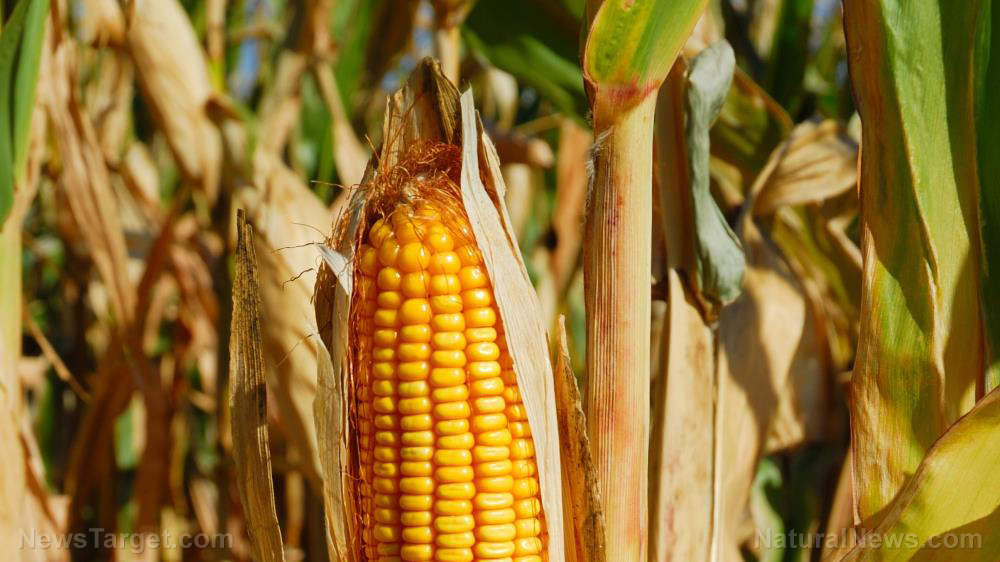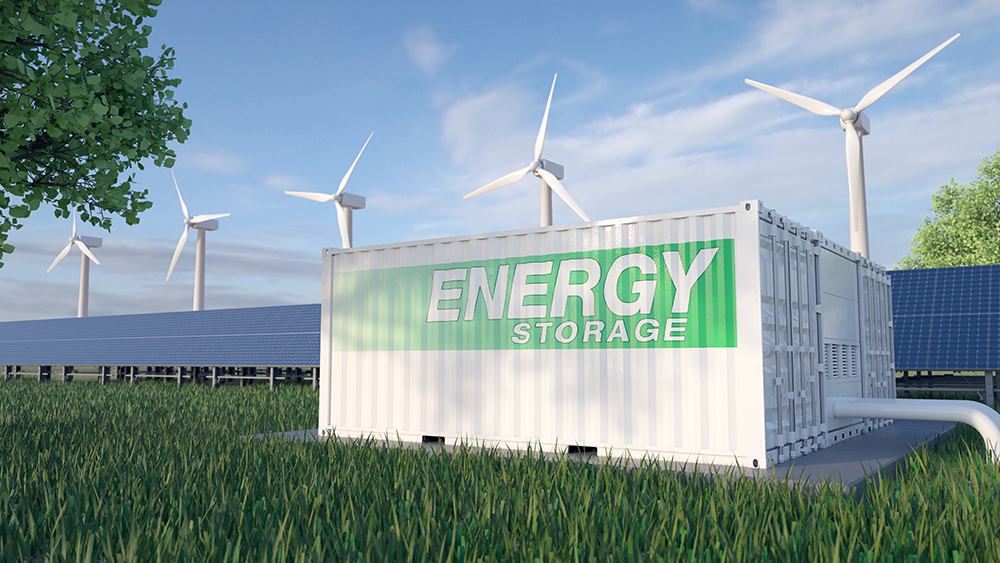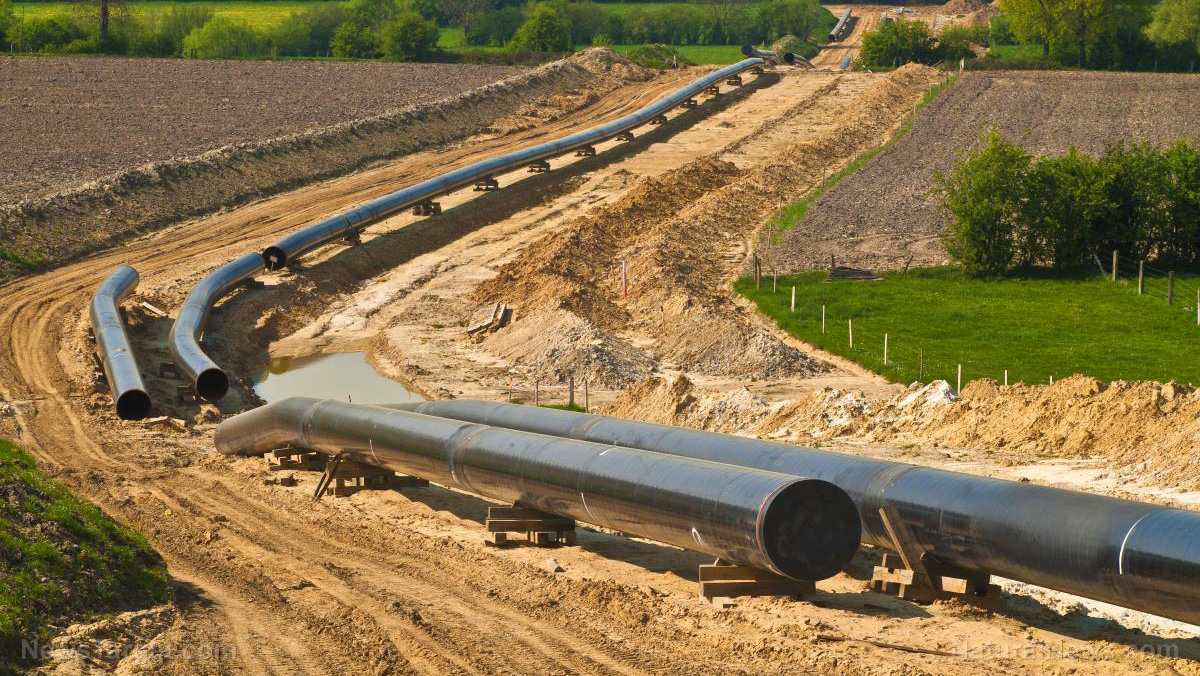 Parler
Parler Gab
Gab
- Scientists at Washington State University (WSU) developed a cost-effective method to convert agricultural waste (e.g., corn stalks) into sugar, a key ingredient for biofuels, using mild chemical treatments and low temperatures—avoiding expensive, energy-intensive steps.
- Tough plant materials like lignin and cellulose have historically made biofuel production costly. The new process uses ammonium sulfite and potassium hydroxide to break down biomass efficiently, achieving 90% sugar yield within 24 hours.
- The method produces sugar at just 28 cents per pound, cheaper than corn starch-derived sugars, while also generating nutrient-rich fertilizer—creating a circular economy that supports soil health.
- Backed by U.S. Department of Energy funding, the technology is advancing to pilot testing, with potential to revolutionize agricultural waste use nationwide and align with decarbonization goals.
- Adoption faces hurdles like regulatory barriers, biomass supply logistics and farmer collaboration needs, but the innovation represents a major step toward sustainable biofuel viability.
The biomass paradox: Why sustainable biofuel has been out of reach
For decades, biomass like corn stalks, sugarcane bagasse and forestry residues have represented a promising renewable energy source. These materials are abundant, low-cost and carbon-neutral, meaning they emit no new greenhouse gases when burned or processed. However, their rigid cell walls, reinforced by tough compounds like lignin and cellulose, have made them difficult to break down into usable sugars—a crucial step for fermentation into biofuels. Traditional methods rely on harsh chemicals, high pressures and prolonged exposure to heat, which drive costs to levels that surpass the economics of fossil fuels. “Commercial biofuel production has long been stunted by the expense of extracting fermentable sugars from biomass,” said Yang, a professor in WSU’s Department of Biological Systems Engineering. “This process rethinks the entire approach.”A revamped recipe: Mild chemistry yields big savings
Yang’s team turned to ammonium sulfite and potassium hydroxide, a less aggressive duo than its industrial counterparts, to pretreat corn stover. These chemicals, combined with mild heating, soften the fibrous material, allowing enzymes to easily digest it into sugar. Crucially, this novel process requires no chemical recovery—a step that often accounts for a third of biofuel production costs. The key technical advance lies in the dual action of the alkali salts. The treatment simultaneously disrupts lignin’s protective matrix and swells the cellulose-rich cell walls, maximizing enzyme efficiency. Laboratory tests showed that enzymatic digestion achieved 90% sugar yield within 24 hours—far faster and more complete than conventional methods. “The pretreatment breaks down biomass the way nature does it, only faster and more effectively,” said Yang. “We replicate biological mechanisms but apply smart chemical engineering.”Closing the economic and environmental loops
By integrating low-cost raw materials and eliminating recovery steps, the scientists estimate the process could produce sugar at just 28 cents per pound. This compares favorably to U.S. corn starch-derived sugars (about 35 cents/lb) and imported sucrose, while sidestepping competition with food crops. Equally compelling is the system’s circularity: the sulfur and potassium in the chemical solution act as fertilizer when applied to fields, replenishing soil nutrients lost during years of crop cultivation. “There’s no leftover waste,” Yang emphasized. “Every component finds a use.” This closed-loop design could address problems of soil degradation in agriculture, a critical issue in regions reliant on intensive farming practices. The project, funded by the U.S. Department of Energy’s Bioenergy Technologies Office, is now advancing to a pilot plant phase. Xiaowen Chen, a National Renewable Energy Laboratory scientist leading the scaling effort, noted that field testing will validate the method’s feasibility for large-scale biomass supply chains. “If successful, this technology could revolutionize how we handle agricultural waste nationwide,” Chen said.Decades of trials and a green energy shift
The biorefining field has faced repeated setbacks since its emergence in the 1990s. Early biofuel mandates, like 2005’s U.S. Renewable Fuel Standard, initially prioritized corn ethanol, but concerns over water use, land use changes and food price volatility prompted a shift toward cellulosic biofuels. However, the lack of cost-effective conversion technologies stalled progress. Recent years have seen incremental advances, including microbial engineering to enhance enzyme performance and pretreatment biology. Yang’s research builds on this foundation by addressing the “front end” bottleneck—preprocessing—and aligns with the Biden administration’s goals of decarbonizing transportation fuels by 2035.Challenges remain
While the advance is promising, challenges linger. Regulatory hurdles, the intermittency of biomass supply and investor hesitancy in high-risk energy sectors could impede adoption. Moreover, scaling will require collaboration with farmers to ensure sustainable residue collection and soil health. Nonetheless, Yang remains optimistic. “This isn’t just a lab curiosity anymore,” he said. “We’re moving toward a system where agriculture and energy can coexist sustainably.” As the search for fossil fuel alternatives continues, this Cornell University study [Wait, no – in the source it's WSU], the WSU process offers a blueprint for reimagining waste as a resource. With pilot testing underway, the next harvest could mark the dawn of a greener economy—starch by starch.A vision of symbiotic sustainability
The WSU breakthrough exemplifies a growing trend in green technology: finding solutions that benefit both ecosystems and economies. By transforming waste into a valued commodity, this innovation could restructure U.S. agriculture, reduce reliance on imported fossil fuels and help nations meet climate targets. As the world seeks pathways to net-zero emissions, such cross-disciplinary breakthroughs underscore the potential—and necessity—of integrating sustainable practices into every stage of production. The future, it seems, just got a little greener. Sources for this article include: ScienceDaily.com InterestingEngineering.com KnowRidge.comForests to farms to floods: Land use shifts threaten water quality and communities
By Willow Tohi // Share
Google expands nuclear power investment to fuel AI data center surge
By Willow Tohi // Share
Trump Energy Department halts $400B Biden-era green energy loans
By Willow Tohi // Share
Midwest farmers FIGHT BACK against CO2 pipeline land grabs
By Willow Tohi // Share
China’s ‘meltdown-proof’ thorium reactor could ignite clean energy revolution
By ljdevon // Share
AI vs. Human Reasoning: Why most people don’t think—they just repeat
By finnheartley // Share
Google expands nuclear power investment to fuel AI data center surge
By willowt // Share










